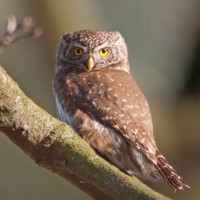Opis
The Wielki Las reserve protects one of the most valuable in terms of nature fragments of the fertile Carpathian beech forest, growing on the higher parts of the Dynowskie Foothills. Within the reserve, you can meet numerous representatives of mountain flora and a number of rare and protected plants. A valuable element of the forest ecosystem existing here is also the tree stand, which in a large part of the reserve is about 100-year-old old beech forest. The forest complexes, which are part of the reserve in question, are within the individual range of many valuable species of fauna. The rarer representatives of this group include: dzięcioł czarny, dzięcioł białogrzbiety, lelek, puszczyk uralski, kobuz, Trzmielojad, pójdźka, uszatka, jastrząb and spotted salamander. In the reserve, you can also meet a dying representative of the entomofauna - the beech capricorn. A forest educational trail runs through the reserve.
Szczegóły
Dostęp
Access via a paved gravel road, parking at the entrance to the nature trail. Click on a the P in the map for directions. The trail indicated on the map is about 2,5 km.




